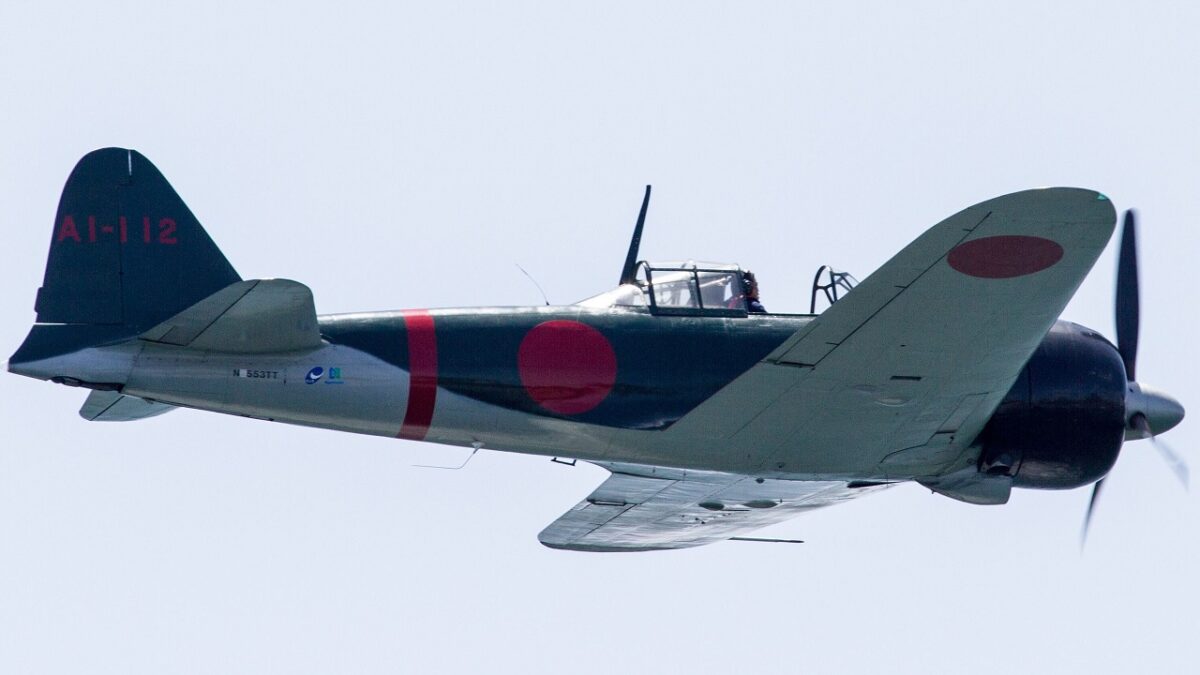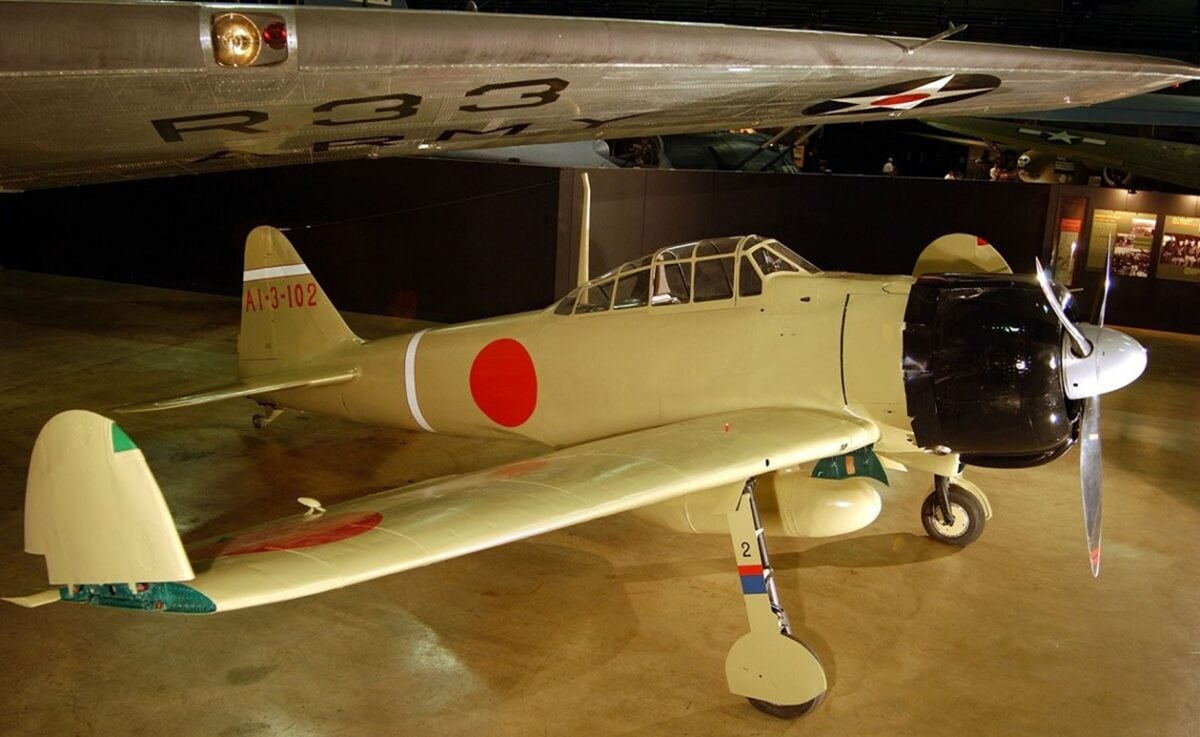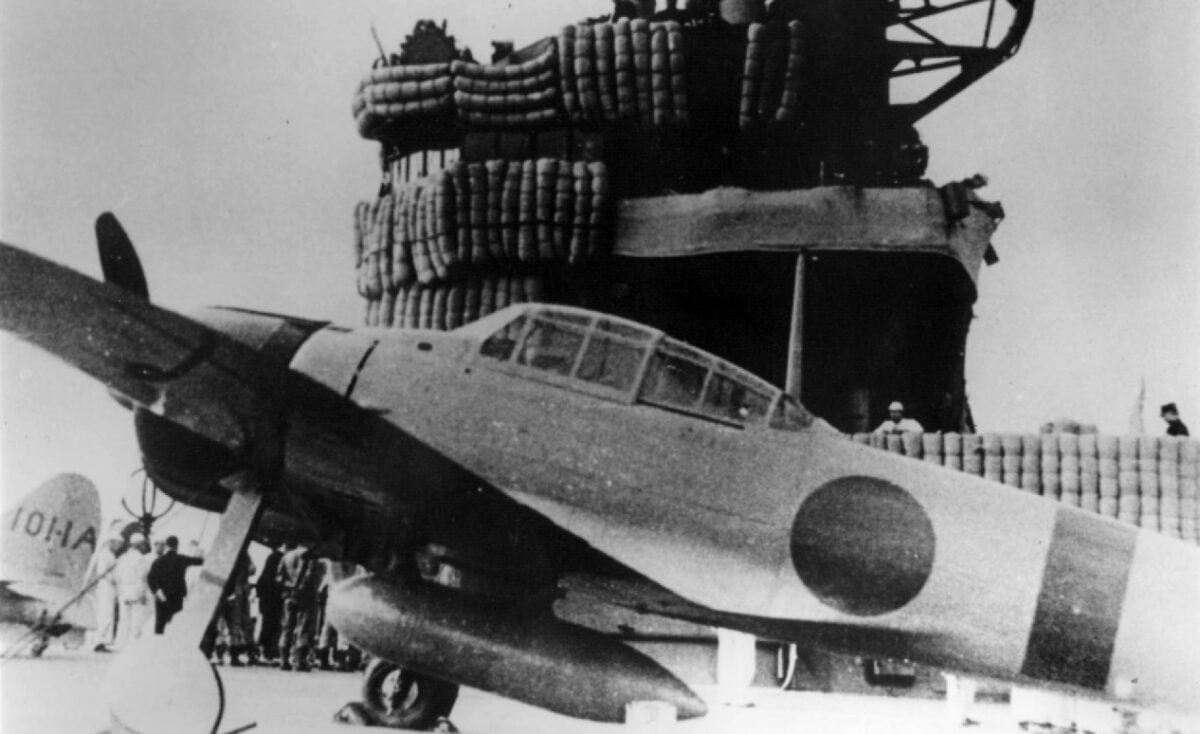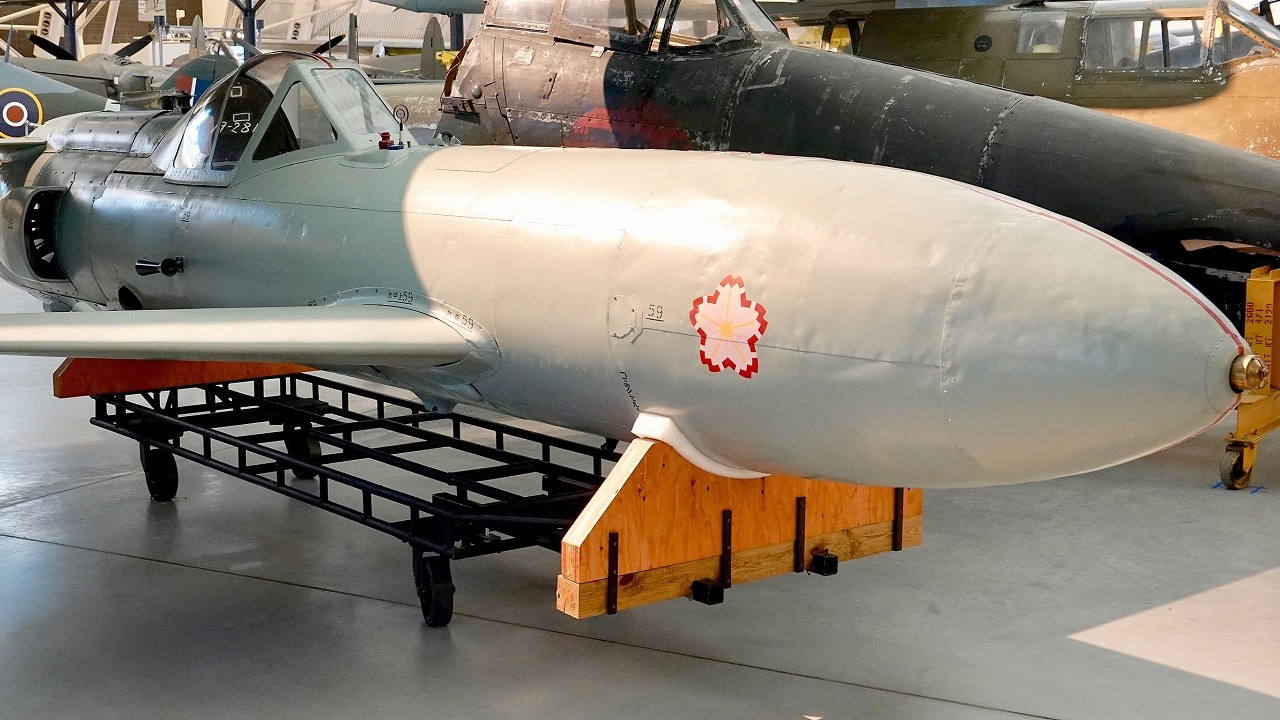Meet the Okha: Japan’s Kamikaze Pilots Became the First Rocket Men – Desperate times call for desperate measures, but few would have expected that for the Empire of Japan it would be meant forming special aviation units that trained brave – and arguably misguided – young men to fly their aircraft into Allied warships.
(Subscribe to Our YouTube Channel Here)
It was during the Battle of Leyte Gulf on October 25, 1944, that marked the first official deployment of the Imperial Japanese Navy’s “shinp tokubetsu k geki tai” (“divine wind special attack units”), which conducted “kamikaze” attacks against U.S. Navy warships. Seen as a truly desperate act, it was meant to save the Japanese nation from complete and utter destruction.
Most of such kamikaze attacks relied on the standard Japanese aircraft, but Imperial Navy Ensign Mitsuo Ohta designed a specialty aircraft that combined elements of a glider with a rocket plane – one that could be piloted with minimal training.
Having accepted the principle of a suicide attack, the idea was to create a weapon that would also have the potential to be far more devastating when it struck its intended target.
The Cherry Blossom
The result was the Yokosuka MXY-7 “Ohka” or “cherry blossom,” an extremely fast, but short-range human-piloted flying bomb that could be deployed from a larger bomber, typically a Mitsubshi G4M “Betty.”
The Ohka was simple – even crude in design – a single-seat aircraft that was powered by a “Campini” jet engine. It featured an aluminum fuselage with wooden wings and twin vertical fins and rudders. It could carry up to 3,000 pounds of high explosives in its nose. Intended to be a “one-way mission,” the Ohka was designed without landing gear.
Cherry Bomb
The Ohka was also designed with speed in mind, and could achieve 500 miles per hour, and it was even believed at the time that no Allied fighter could catch and shoot down the Okha.
The first 16 Ohkas, flying in loose formation, made their combat debut on an attack on the U.S. fleet in March of 1945. Despite the belief that speed would be enough, nearly every one of the kamikaze aircraft were shot down by carrier-based aircraft due in part to the fact the rocket planes were launched at an extreme distance and failed to maintain their maximum speed.
However, the Japanese kept trying and a month later, on April 12, 1945, a rocket-powered Ohka successfully hit the U.S. Navy Allen M. Sumner-class destroyer USS Mannert L. Abele (DD-733). The downward force of the blast resulted in the immediate loss of power, and caused the ship to break in two.
The destroyer was the first U.S. warship to be seriously damaged or sunk by the suicide flying bomb. Of the 336 sailors on board, 84 were killed in the blast.
Other warships that were hit by the weapon included the USS Gayety (AM-239), USS Hugy W. Hadley (DD-744), and USS Shea (DD-750). Damage from those attacks, which took place on May 4, 1945 was significant, and D-744 suffered such extensive damage and flooding that the vessel was judged to be beyond repair. However, as with the greater kamikaze efforts, the Yokosuka MXY-7 “Ohka” proved to be far from a miracle weapon and was likely a waste of resources and personnel.
Production of the Ohka lasted just a few months and with around 855 being produced.
Today just over a dozen of the terror/suicide weapons remain – and those surviving aircraft are now on display at various museums around the world.
Bonus Photo Essay: Meet Japan’s Zero Fighter from World War II

Japanese Zero Fighter Plane. Image Credit: Creative Commons.

No other aircraft surpasses the Mitsubishi A6M Reisen (“ree-sin,” Japanese for Zero Fighter) as the symbol of Japanese air power during World War II. Mitsubishi designed the Zero fighter but co-produced the airplane with Nakajima.

DAYTON, Ohio — Mitsubishi A62M Zero at the National Museum of the United States Air Force. (U.S. Air Force photo)

An Imperial Japanese Navy Mitsubishi A6M2 “Zero” fighter on the aircraft carrier Akagi during the Pearl Harbor attack mission.
Now a Senior Editor for 1945, Peter Suciu is a Michigan-based writer who has contributed to more than four dozen magazines, newspapers and websites. He regularly writes about military hardware, and is the author of several books on military headgear including A Gallery of Military Headdress, which is available on Amazon.com. Peter is also a Contributing Writer for Forbes.

